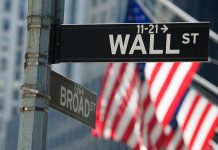Markets
European and US yields parted ways yesterday with Europe underperforming. A thin eco calendar failed to inspire, but comments by ECB Wunsch in an FT interview managed to do the trick. They were released ahead of the European opening bell, but resonated throughout European dealings. Wunsch added to recent hawkish comments from him and several other ECB figures, arguing that the ECB has no other choice but to continue its inflation battle as core (services) inflation and wage inflation show no sign of abating yet. He wouldn’t be surprised to see the key ECB policy rate reach 4%. We also expect him to back another 50 bps rate hike next week, our preferred scenario. German yields rose between 0.9 bps (30-yr) and 5.8 bps (2-yr) yesterday with the front end of the curve obviously underperforming. US yields eventually closed 6.5 bps (30-yr) to 10 bps (3-yr) lower! They were already on a slippery slope throughout the day, but Q1 earnings from First Republic Bank delivered the final and strongest blow at the closing bell. The US regional bank was already on death row with earnings now revealing over $100bn of deposit outflows between mid-March ($138.1bn) and mid-April. This compares with mostly single-digit deposit outflow figures at other regional banks which already reported Q1 results. The Fed and big banks provided a liquidity stopgap to secure First Republic’s short-term survival, but long-term profitability is seriously at risk. First Republic bank shares fell around 20% in after-hours trading. We won’t get dragged away too far by moves in the transition from US to Asian dealings and don’t expect this to be the start of a new period of instability as witnessed in the wake of the collapse of Silicon Valley Bank. The US/German 2y yield spread dropped below 110 bps to the lowest level since October 2021. These relative yield dynamics translate into additional gains for EUR/USD. The pair took out the 1.10 big figure and tested the 1.1076 YTD top. Real resistance stands at 1.1274 which is 62% retracement on the EUR/USD decline between early 2021 and late 2022. (Temporary?) risk aversion related to US regional banking problems last month didn’t help the greenback with EUR and JPY the preferred safe haven currencies. On balance, the single currency even outperforms the Japanese yen as new BoJ governor Ueda sticks to previous governor Kuroda’s dovish policy stance. He said in front of parliament this morning that tightening now may cause inflation (currently above target led by cost-push factors) to weaken more than currently already expected and could have serious consequences in the future. EUR/JPY is testing the 2022 top at 148.40 with next resistance (2015 top) at 149.78. Apart from general risk sentiment, we look at US eco data to guide trading (Philly Fed business outlook, Richmond Fed manufacturing index and consumer confidence). Especially disappointing numbers could be picked up.
News and views
Q1 South Korean growth printed slightly stronger than expected at 0.3% Q/Q (from -0.4% Q/Q in Q4 2022). Demand was supported by a 0.5% rise in private consumption. However, capital investment contracted by 4%. Exports and imports respectively gained 3.8% and 3.5%. The Bank of Korea expects a further economic rebound in the second half of the year but uncertainty remains high both internally and externally. Earlier this month, the BOK for a second consecutive meeting left its policy rate unchanged at 3.5% as it indicated that growth this year might be slightly below its previous 1.6% forecast. At the same time March inflation (4.2% Y/Y) remained well above the 2% inflation target. The Korean won stays in the defensive easing to USD/KRW 1336, despite an overall soft USD.
A series of economic data published in Poland yesterday printed on the softer side of expectations. PPI producer prices dropped 0.8% M/M in March easing the Y/Y figure to 10.1% Y/Y (-0.5% and 18.2% Y/Y in February). The decline in industrial output also accelerated from -1.0% Y/Y in February to -2.9% Y/Y in March as a 14.1 M/M gain was not enough to compensate for a big positive base effect last year. Construction output also missed the consensus estimate, declining 1.5% Y/Y from a positive growth of 6.6% the previous month. Last but not least, retail sales showed a similar picture as was the case for production. A 14% monthly rise was not enough to compensate for a big monthly gain last year resulting in a further decline in the Y/Y measure from -5.0% to -7.3%. For now, the National Bank of Poland is keeping a wait-and-see approach as inflation (16.1% Y/Y in March) remains too high to start the debate on possible interest rate cuts even as activity slows. Weaker eco data didn’t hurt recent positive sentiment on the zloty. EUR/PLN closed below 4.60, testing the strongest levels for the zloty since June last year.












